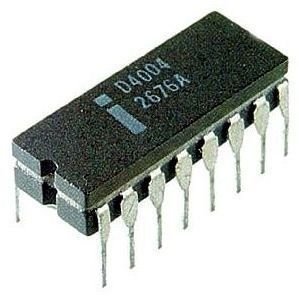This Day in Computer History: November 15
This Day in Computer History
1883
Thomas Edison was granted a patent on his two-element vacuum tube.
1971
Intel released the first single-chip CPU in history, as well as the first commercially available microprocessor, the Intel 4004. The chip, designed by Federico Faggin and Marcian “Ted” Hoff, and Masatoshi Shima, was initially developed for Japanese calculator manufacturer Busicom. It ran at a clockspeed of 108 KHz and featured a 4-bit bus. In conjunction with Intel’s RAM chips, Intel’s 4004 chip will revolutionize the computer industry by beginning the miniaturization of consumer electronics. Price: $200
1985
At the University of Michigan in Ann Arbor, Michigan, a graduate assistant Nicklaus Suino was injured when a mail bomb addressed to a professor and sent from the Unabomber detonates. In all, the domestic terrorist known as the Unabomber sent sixteen bombs, injuring twenty-three people in protest of “the erosion of human freedom necessitated by modern technologies requiring large-scale organization.”
1987
At Lehigh University in Pennsylvania, the first virus that caused directly damaged infected computers’ data was first discovered. The virus, later dubbed “The Lehigh Virus” affected the COMMAND.COM file of disks formatted for MS-DOS by overwriting the end of the file’s stack space. Each time the disk accessed the COMMAND.COM file, usually upon booting, the virus would add another iteration of itself to the file. When the file contained four copies, the virus would overwrite the disk’s boot and FAT sectors with data transferred from the affected computer’s BIOS. The virus was contained, largely due to its ineffective design. With each infected disk creating only a maximum of four duplicated, it simply failed to “survive” long enough to be unwittingly passed off-campus. In addition, the virus was easily prevented by setting COMMAND.COM as a read-only file.
1994
Hayes Microcomputer Products, one of the nation’s largest manufacturer of computer modems, filed in court for Chapter 11 Bankruptcy protection from which it won’t emerge until April 1996. During the course of its reorganization, it would struggle against acquisition by both Diamond Multimedia and US Robotics.
1995
Christopher Pile became the first person in history to be sentenced to prison for writing and distributing a computer virus. He was sentenced to eighteen months in jail. Online he was known by the handle “Black Baron”.
1999
At the COMDEX trade show, Corel released the first version (1.0) of its Corel Linux distribution. The distribution is based on Debian.
2000
The Southern Cross Cable went into service. It connected the four points of Australia, California, Fiji, Hawaii, and New Zealand over a distance of 30,500 km at 120Gbps to Australia and at 160Gbps between Hawaii and California.
2001
Advanced Micro Devices released the 1.2 MHz Duron processor, featuring a 200 MHz front-side bus. Price: $103 in 1,000-unit quantities
The SURFnet Dutch research network is connected to the Internet2 Abilene Network via gigabit ethernet.
2006
Intel commemorates the thirty-fifth anniversary of the Intel 4004 by publicly releasing the chip’s mask works, schematics, and user manual.
2007
The Netscape Messenger 9.0a1 standalone e-mail and news client was released for Linux, Mac, and Windows computers.
This post is part of the series: A Chronology of Computer History for the Month of November: This Day in Computer History
This series provides a daily account of what happened on this day in the history of computing and technology. It discusses developments, breaking news, new releases and global implications that occurred as a result of these ground breaking events.
- This Day in Computer History: November 4
- This Day in Computer History: November 5
- This Day in Computer History: November 6
- This Day in Computer History: November 7
- This Day in Computer History: November 9
- This Day in Computer History: November 10
- This Day in Computer History: November 11
- This Day in Computer History: November 12
- This Day in Computer History: November 13
- This Day in Computer History: November 14
- This Day in Computer History: November 15
- This Day in Computer History: November 16
- This Day in Computer History: November 17
- This Day in Computer History: November 18
- This Day in Computer History: November 19
- This Day in Computer History: November 20
- This Day in Computer History: November 21
- This Day in Computer History: November 22
- This Day in Computer History: November 24
- This Day in Computer History: November 25
- This Day in Computer History: November 26
- This Day in Computer History: November 27
- This Day in Computer History: November 28
- This Day in Computer History: November 29
- This Day in Computer History: November 30
